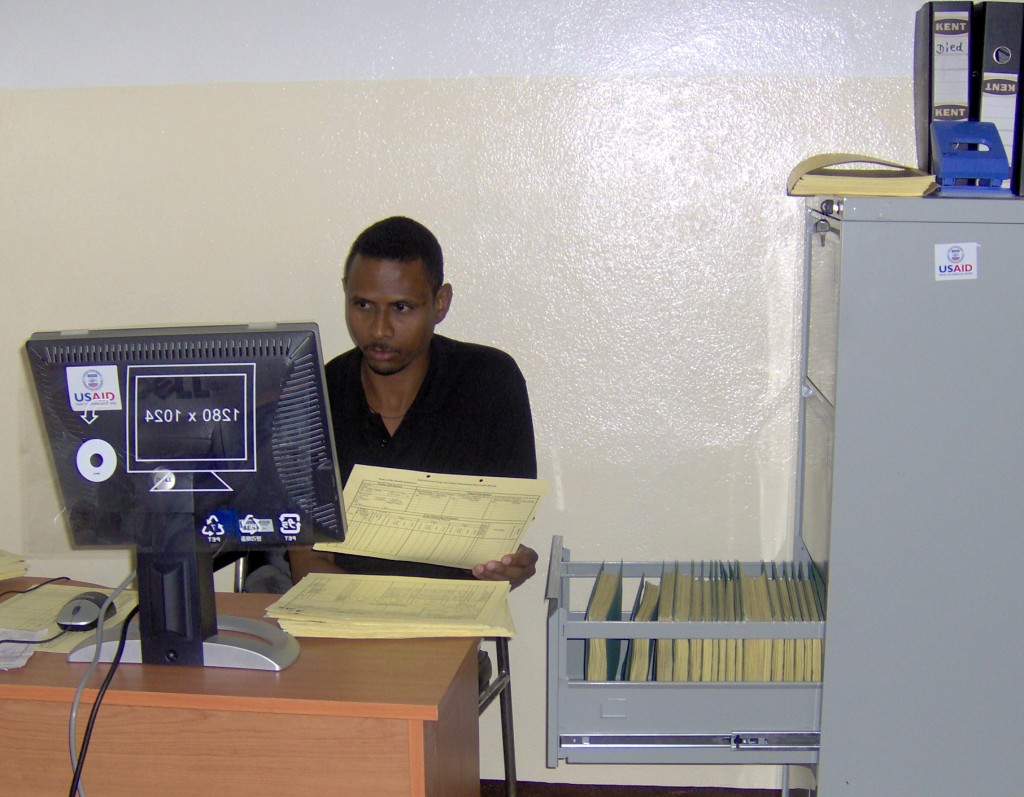
Before joining the SIAPS team, Greatjoy Mazibuko served as a hospital pharmacist in charge of antiretroviral therapy (ART) services at the Oshakati Intermediate Hospital in Namibia. During this time, Greatjoy first worked with Management Sciences for Health (MSH) to help his hospital’s ART pharmacy adopt a pharmaceutical information management tool, the Electronic Dispensing Tool (EDT) funded by the US Agency for International Development (USAID) and the US President’s Emergency Plan for AIDS Relief (PEPFAR).
Although incidence is dropping, roughly 13% of adults in Namibia were infected with HIV in 2012.[1] In some areas of the country, however, prevalence is much higher. In the Oshana region, where Greatjoy was working, about 28% of adults were living with HIV in 2010.[2] According to the Ministry of Health and Social Services, Namibia is continuing to see a reduction in new HIV infections, but the country still faces challenges in their public health response to the epidemic. Chief among these obstacles is a lack of skilled health workers.[3]
When Greatjoy started working at the Oshakati Intermediate Hospital in July 2004, the ART pharmacy would normally close late in order to distribute medications and update patient and stock information. Even with the support of other healthcare workers, he explained that the ART pharmacy staff would regularly leave two hours past closing time for the rest of the hospital. In addition to long and busy weekdays, Greatjoy also had to work weekends and holidays to collate patient information to prepare monthly reports. From this testimony, it is clear that many healthcare workers in Namibia could easily become overwhelmed. When EDT was adopted in Namibia, not only did its functionality improve service delivery, but it also eased the burden on healthcare workers like Greatjoy.
Later that same year, Greatjoy worked with a team that identified the need for an electronic patient management tool. With support from MSH, EDT was piloted and adopted at the Oshakati Intermediate Hospital and four other health facilities in Namibia in 2005. With his training from MSH, Greatjoy helped the ART pharmacy adopt three modules of EDT: the patient management module, the stock management module, and the reporting module for the ART monthly report. The patient management module was equipped to carry out patient, medicine, and regimen registration, as well as provide baseline and outcomes for CD4 counts, viral load, and adherence. Additionally, this module could track upcoming patient appointments, which meant pharmacy staff could prepare medicines ahead of time for patient visits. The stock management module tracks stock take and can do quantification calculations. The reporting module automatically generates the ART monthly reports that Greatjoy used to spend his weekends writing.
According to Greatjoy, the improvements in pharmaceutical services after the adoption of EDT were clear. While it did take some time to capture patient and medication information in EDT at the patient’s first visit, each subsequent visit built on an existing patient profile. This reduced the time needed to capture patient information and dispense medicines during visits, which made Greatjoy and the ART pharmacy staff more available to provide quality patient counseling. Once EDT was used at other sites, a national database with unique patient ID numbers allowed for easy tracking across Namibia. Now, when patients would move between sites for work or other reasons, their HIV treatment would not suffer. Additionally, EDT’s reporting module eliminated the need for staff to manually compile information for monthly reports. The reports from EDT only required a review by the ART clinic staff, which saved a lot of time for Greatjoy and his co-workers. This functionality lifted the reporting burden from Greatjoy and other pharmacy staff so that they could provide patients with the type of care and services they needed.
For more information about EDT, visit: https://siapsprogram.org/tools-and-guidance/edt/.

